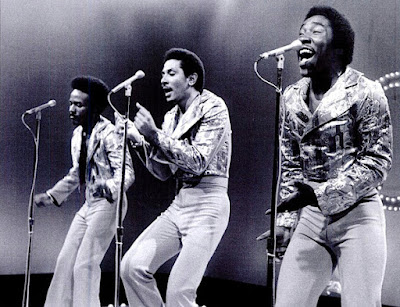I was inspired by a podcast called The 500 hosted by Los Angeles-based comedian Josh Adam Meyers. His goal, and mine, is to explore Rolling Stone Magazine's 2012 edition of The 500 Greatest Albums of All Time.
Album: # 315
Album Title: Damn The Torpedoes
Artist: Tom Petty And The Heartbreakers
Genre: Rock
Recorded: Sound City & Cherokee Studios, California
Released: October, 1979
My age at release: 14
How familiar was I with it before this week: Very
Is it on the 2020 list? Yes, #231 - moving up 84 spots
Song I am putting on my Spotify Playlist: Here Comes My Girl
On a chilly December afternoon in 1979, my family and I made our annual trip to Devonshire Mall in Windsor, Ontario, to do Christmas shopping. For the first time, I had my own money tucked into my jeans pockets -- about twenty dollars I had cobbled together from babysitting jobs and working the snack-bar at my high-school.
Before the family station wagon had come to a complete stop in the mall parking lot, I was already clambering out of my seat in a frantic effort to dash to the mall's record store. Sure, I was going to buy a token gift to put under the tree for my parents and siblings, but I had vinyl records on my mind.
 |
| Devonshire Mall (1970s) |
Although I didn't have a turntable of my own, I was already building a record collection. My window on popular music was defined by two sources – the music guests on Saturday Night Live and Detroit FM radio stations. I had narrowed my Christmas choices to four fairly recent releases – The Pleasure Principle by Gary Numan; Candy-O by The Cars; Eat To The Beat by Blondie; and Damn The Torpedoes from Tom Petty And The Heartbreakers. After much deliberation, and a trip to the record department at the Sears store to compare prices, I settled on Candy-O. I can't remember the reason but I was 14, so I suspect the Alberto Vargas cover art had something to do with it.
I eventually bought Damn The Torpedoes , and I remain a fan of Tom Petty (and those four other bands) to this day. The title is taken from a famous quote made by U.S. Civil War Admiral David Farragut at The Battle of Mobile Bay, "Damn the torpedoes, full steam ahead!"
Admiral Farragut
Formed in Gainesville, Florida, in 1976, the band originally comprised lead vocalist and guitarist Petty; lead guitarist Mike Campbell; bassist Rob Blair; drummer Stan Lynch; and keyboardist Benmont Tench. It was the third of thirteen records made by The Heartbreakers. Petty also released an additional three solos, but members of The Heartbreakers also contributed to those. In addition, Petty was part of the supergroup, The Traveling Wilburys, which included Roy Orbison, Bob Dylan, Jeff Lynne and George Harrison.
 |
| (l-r) Campbell, Blair, Petty, Lynch and Tench |
Over time, I've learned a lot about Petty and his bandmates. A few years ago I was writing a script for a stage production about his life and music in collaboration with my friend, musician Cam Grant. Cam and I have known each other for decades and he is a mainstay in the arts and entertainment scene in London, Ontario. He portrays the front-man (Tom) in an award-winning Tom Petty Tribute band called Full Petty Fever.
 |
| Cam, center, with his band Full Petty Fever (May, 2022) |
The storyline of our musical theatre show would open with a spotlight on the left side of the stage in the studio of a Los Angeles rock radio station. The narrator, William Berry, a paunchy, balding man in his mid-sixties approaches the broadcast microphone to announce the news of Petty's death on the evening October 2, 2017. We learn that Berry is the CEO of a network of radio stations over which the death announcement is being broadcast. He gave the bad news thusly:
"It's been many years since I've been a broadcaster, but today, on this sad day, I feel compelled to share this news with you, our listeners. Musician, composer, philanthropist, artistic force and (his voice shakes) my friend, Tom Petty, has died."As Berry moves away from the microphone, pausing to gather his thoughts, the lights come up on centre stage to reveal Cam and his band who open the musical portion of the show with a performance of Breakdown, the first single from Petty's debut record.
As the song fades, the lights return to stage left. We have shifted to a time when Berry was much younger, slimmer and working as a college DJ. He has long hair and sideburns, decked out in bell-bottom jeans and a fringe jacket.
"That's Breakdown, the first single from Gainsville's own Tom Petty and the Heartbreakers and I'm William Berry. You're listening to WUFQ-FM directly from the campus of The University of Florida. We are Central Florida's home for rock."As the musical progresses, we follow the career of Petty and his band through the eyes of Berry who shares each story through anecdotes and radio banter, cutting away to centre stage frequently for performances by Cam's tribute band. If you are a Petty fan, you'll admit, the set-list of songs is impressive.The goal of our script-writing project. was to approach small, summer theatres in Southwestern Ontario and try to book a single night's performance in each as we workshopped this concept. Eventually, we hoped to secure a two-week engagement at a larger venue. We even applied, unsuccessfully, for two art grants.
Cam and his group continue to perform Petty material in bars, but the success of our theatrical production was hindered by the copyright difficulties.
However, all is not lost. When I contacted Cam the other day for his approval to share this story, he responded with the following optimistic message.
Stay tuned, there may be more to say about our efforts to tell the story of Tom Petty and the Heartbreakers.
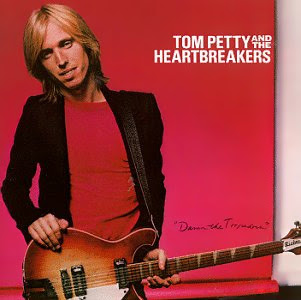
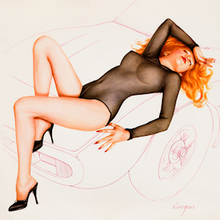

.jpg)









.jpg)



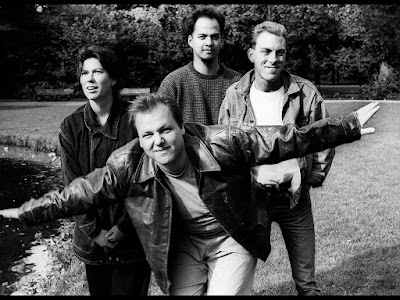


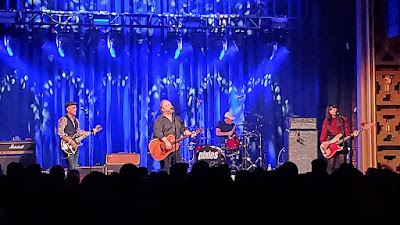.jpg)



